Jiakuo Zuo
Non-Orthogonal Multiple Access For Near-Field Communications
Apr 25, 2023Abstract:The novel concept of near-field non-orthogonal multiple access (NF-NOMA) communications is proposed. The near-filed beamfocusing enables NOMA to be carried out in both angular and distance domains. Two novel frameworks are proposed, namely, single-location-beamfocusing NF-NOMA (SLB-NF-NOMA) and multiple-location-beamfocusing NF-NOMA (MLB-NF-NOMA). 1) For SLB-NF-NOMA, two NOMA users in the same angular direction with distinct quality of service (QoS) requirements can be grouped into one cluster. The hybrid beamformer design and power allocation problem is formulated to maximize the sum rate of the users with higher QoS (H-QoS) requirements. To solve this problem, the analog beamformer is first designed to focus the energy on the H-QoS users and the zero-forcing (ZF) digital beamformer is employed. Then, the optimal power allocation is obtained. 2) For MLB-NF-NOMA, the two NOMA users in the same cluster can have different angular directions. The analog beamformer is first designed to focus the energy on both two NOMA users. Then, a singular value decomposition (SVD) based ZF (SVD-ZF) digital beamformer is designed. Furthermore, a novel antenna allocation algorithm is proposed. Finally, a suboptimal power allocation algorithm is proposed. Numerical results demonstrate that the NF-NOMA can achieve a higher spectral efficiency and provide a higher flexibility than conventional far-field NOMA.
Active Simultaneously Transmitting and Reflecting -RISs: Modelling and Analysis
Feb 09, 2023Abstract:A hardware model for active simultaneously transmitting and reflecting reconfigurable intelligent surfaces (STAR-RISs) is proposed consisting of reflection-type amplifiers. The amplitude gains of the STAR element are derived for both coupled and independent phase-shift scenarios. Based on the proposed hardware model, an active STAR-RIS-aided two-user downlink communication system is investigated. Closed-form expressions are obtained for the outage probabilities of both the coupled and independent phase-shift scenarios. To obtain further insights, scaling laws and diversity orders are derived for both users. Analytical results confirm that active STAR-RIS achieves the same diversity orders as passive ones while their scaling laws are different. It is proved that average received SNRs scale with M and M^2 for active and passive STAR-RISs, respectively. Numerical results show that active STAR-RISs outperform passive STAR-RISs in terms of outage probability especially when the number of elements is small.
Exploiting NOMA and RIS in Integrated Sensing and Communication
Oct 06, 2022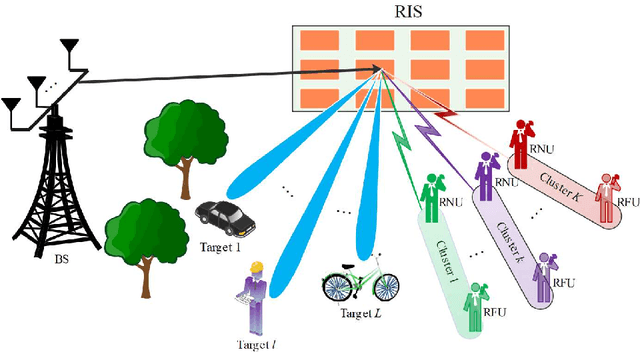
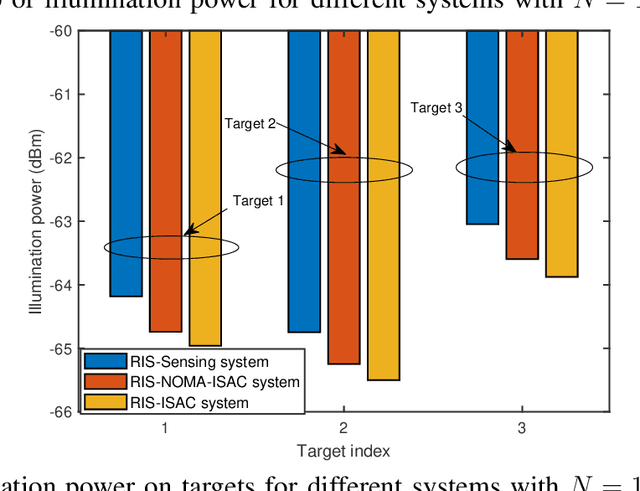
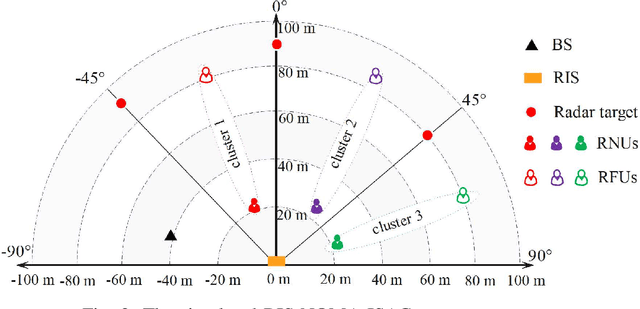
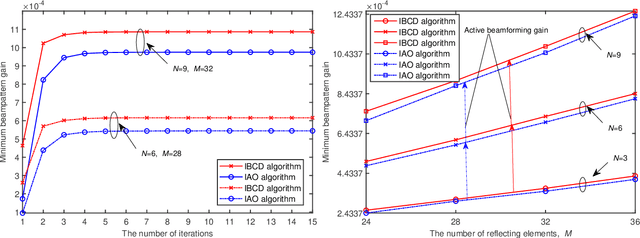
Abstract:A novel integrated sensing and communication (ISAC) system is proposed, where a dual-functional base station is utilized to transmit the superimposed non-orthogonal multiple access (NOMA) communication signal for serving communication users and sensing targets simultaneously. Furthermore, a new reconfigurable intelligent surface (RIS)-aided-sensing structure is also proposed to address the significant path loss or blockage of LoS links for the sensing task. Based on this setup, the beampattern gain at the RIS for the radar target is derived and adopted as a sensing metric. The objective of this paper is to maximize the minimum beampattern gain by jointly optimizing active beamforming, power allocation coefficients and passive beamforming. To tackle the non-convexity of the formulated optimization problem, the beampattern gain and constraints are first transformed into more tractable forms. Then, an iterative block coordinate descent (IBCD) algorithm is proposed by employing successive convex approximation (SCA), Schur complement, semidefinite relaxation (SDR) and sequential rank-one constraint relaxation (SRCR) methods. To reduce the complexity of the proposed IBCD algorithm, a low-complexity iterative alternating optimization (IAO) algorithm is proposed. Particularly, the active beamforming is optimized by solving a semidefinite programming (SDP) problem and the closed-form solutions of the power allocation coefficients are derived. Numerical results show that: i) the proposed RIS-NOMA-ISAC system always outperforms the RIS-ISAC system without NOMA in beampattern gain and illumination power; ii) the low-complexity IAO algorithm achieves a comparable performance to that achieved by the IBCD algorithm. iii) high beampattern gain can be achieved by the proposed joint optimization algorithms in underloaded and overloaded communication scenarios.
Reconfigurable Intelligent Surface Assisted NOMA Empowered Integrated Sensing and Communication
Aug 14, 2022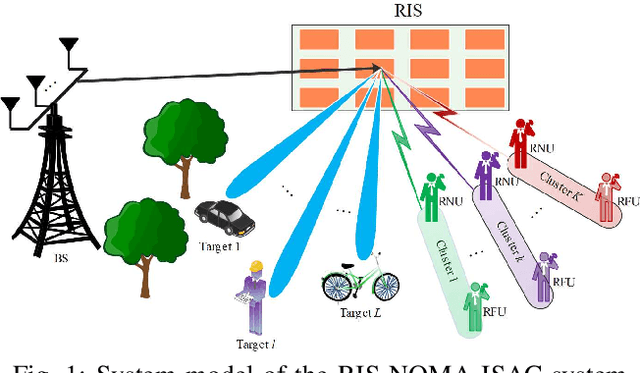
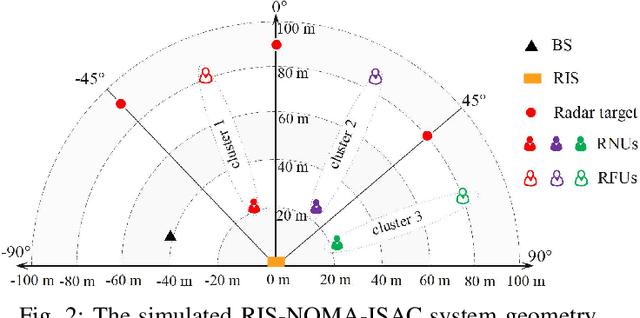
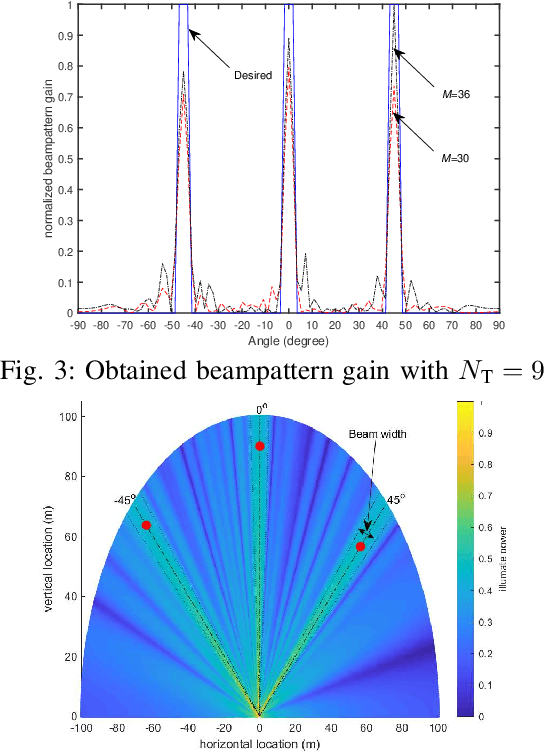
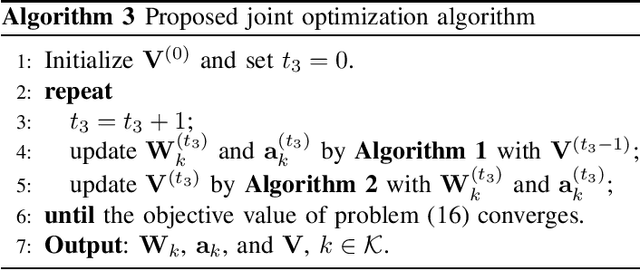
Abstract:This paper exploits the potential of reconfigurable intelligent surface (RIS) to improve radar sensing in a non-orthogonal multiple access (NOMA) empowered integrated sensing and communication (NOMA-ISAC) network. The objective is to maximize the minimum radar beampattern gain by jointly optimizing the active beamforming, power allocation coefficients and passive beamforming. To tackle the formulated non-convex problem, we propose an efficient joint optimization algorithm by invoking alternating optimization, successive convex approximation (SCA) and sequential rank-one constraint relaxation (SRCR) algorithm. Numerical results show that the proposed RIS assisted NOMA-ISAC system, with the aid of proposed scheme, outperforms the RIS assisted ISAC system without NOMA.
Joint Design for Simultaneously Transmitting And Reflecting (STAR) RIS Assisted NOMA Systems
Jun 06, 2021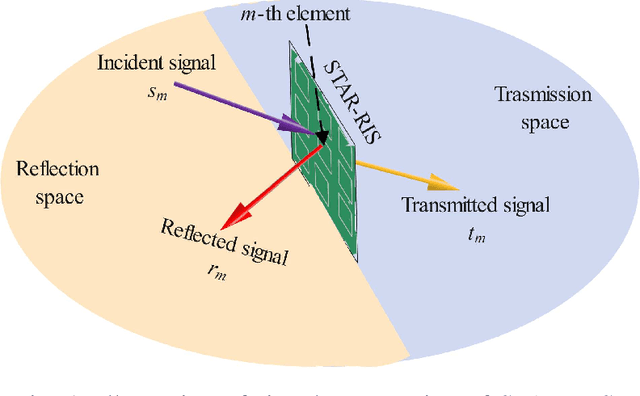
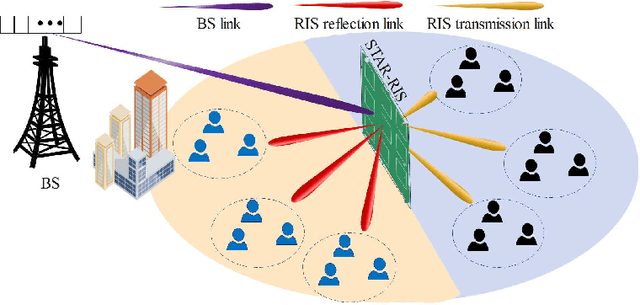
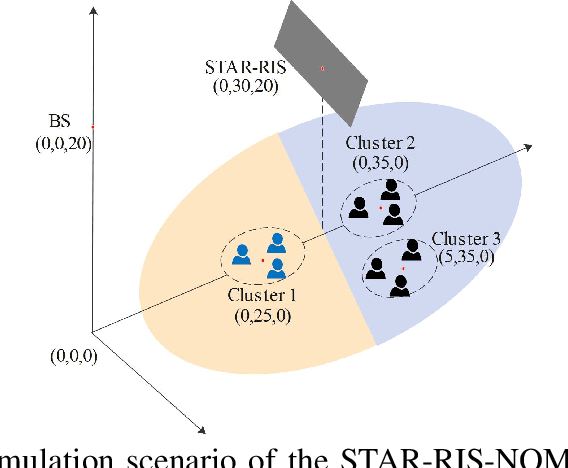
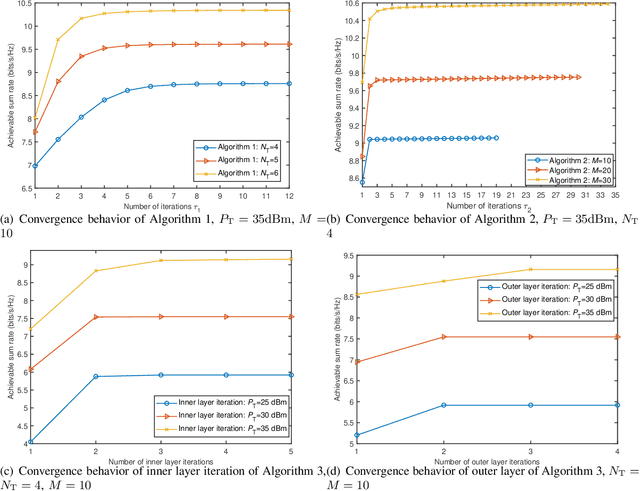
Abstract:Different from traditional reflection-only reconfigurable intelligent surfaces (RISs), simultaneously transmitting and reflecting RISs (STAR-RISs) represent a novel technology, which extends the \textit{half-space} coverage to \textit{full-space} coverage by simultaneously transmitting and reflecting incident signals. STAR-RISs provide new degrees-of-freedom (DoF) for manipulating signal propagation. Motivated by the above, a novel STAR-RIS assisted non-orthogonal multiple access (NOMA) (STAR-RIS-NOMA) system is proposed in this paper. Our objective is to maximize the achievable sum rate by jointly optimizing the decoding order, power allocation coefficients, active beamforming, and transmission and reflection beamforming. However, the formulated problem is non-convex with intricately coupled variables. To tackle this challenge, a suboptimal two-layer iterative algorithm is proposed. Specifically, in the inner-layer iteration, for a given decoding order, the power allocation coefficients, active beamforming, transmission and reflection beamforming are optimized alternatingly. For the outer-layer iteration, the decoding order of NOMA users in each cluster is updated with the solutions obtained from the inner-layer iteration. Moreover, an efficient decoding order determination scheme is proposed based on the equivalent-combined channel gains. Simulation results are provided to demonstrate that the proposed STAR-RSI-NOMA system, aided by our proposed algorithm, outperforms conventional RIS-NOMA and RIS assisted orthogonal multiple access (RIS-OMA) systems.
 Add to Chrome
Add to Chrome Add to Firefox
Add to Firefox Add to Edge
Add to Edge